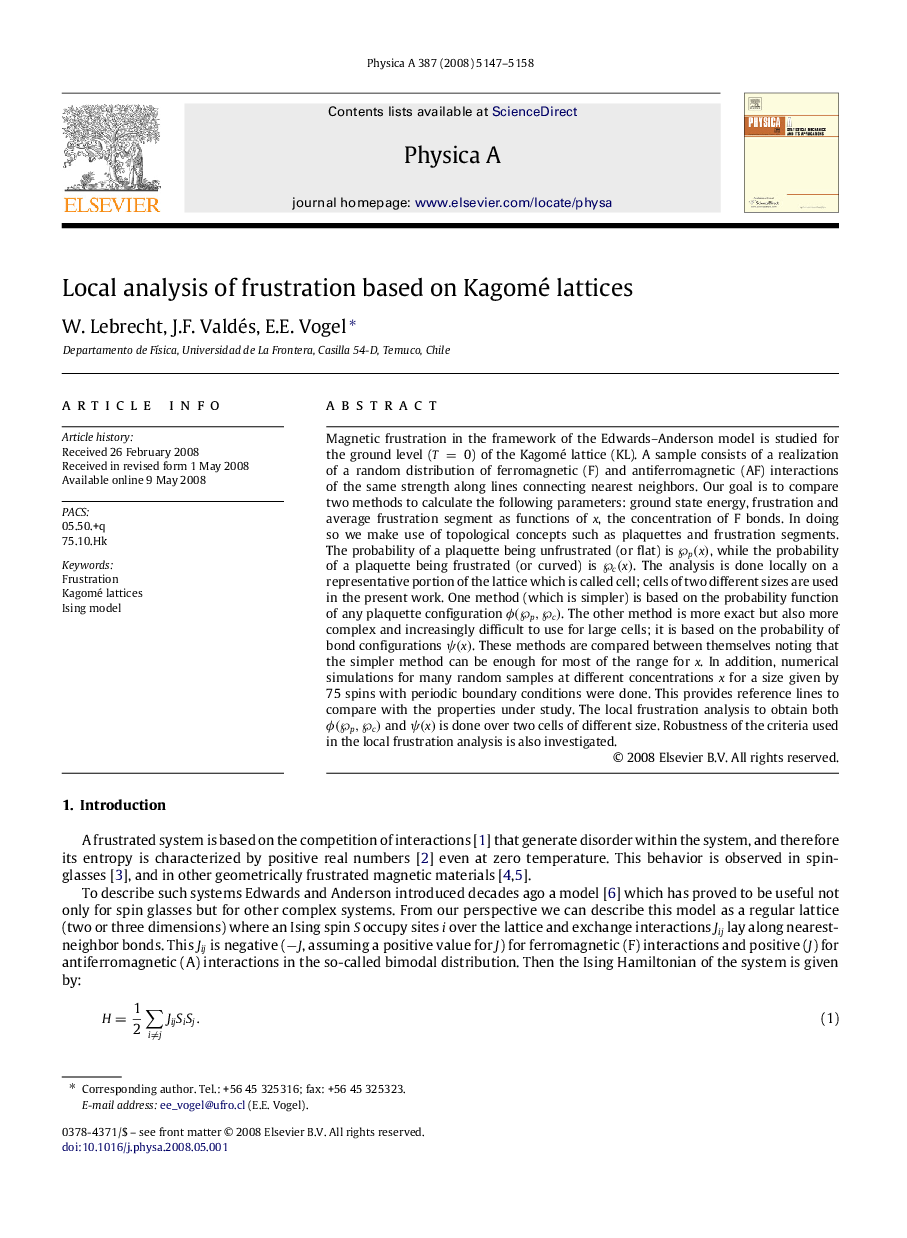| Article ID | Journal | Published Year | Pages | File Type |
|---|---|---|---|---|
| 977904 | Physica A: Statistical Mechanics and its Applications | 2008 | 12 Pages |
Abstract
Magnetic frustration in the framework of the Edwards-Anderson model is studied for the ground level (T=0) of the Kagomé lattice (KL). A sample consists of a realization of a random distribution of ferromagnetic (F) and antiferromagnetic (AF) interactions of the same strength along lines connecting nearest neighbors. Our goal is to compare two methods to calculate the following parameters: ground state energy, frustration and average frustration segment as functions of x, the concentration of F bonds. In doing so we make use of topological concepts such as plaquettes and frustration segments. The probability of a plaquette being unfrustrated (or flat) is âp(x), while the probability of a plaquette being frustrated (or curved) is âc(x). The analysis is done locally on a representative portion of the lattice which is called cell; cells of two different sizes are used in the present work. One method (which is simpler) is based on the probability function of any plaquette configuration Ï(âp,âc). The other method is more exact but also more complex and increasingly difficult to use for large cells; it is based on the probability of bond configurations Ï(x). These methods are compared between themselves noting that the simpler method can be enough for most of the range for x. In addition, numerical simulations for many random samples at different concentrations x for a size given by 75 spins with periodic boundary conditions were done. This provides reference lines to compare with the properties under study. The local frustration analysis to obtain both Ï(âp,âc) and Ï(x) is done over two cells of different size. Robustness of the criteria used in the local frustration analysis is also investigated.
Related Topics
Physical Sciences and Engineering
Mathematics
Mathematical Physics
Authors
W. Lebrecht, J.F. Valdés, E.E. Vogel,
